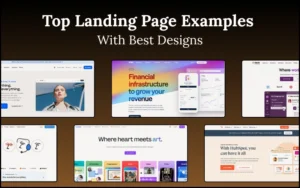In a lot of ways, social media has replaced magazines and newspapers, making these digital platforms an excellent way to spread influence and create a presence of your brand. Using social media for business has become the norm these days, with upcoming as well as established players making a mark on various social media platforms such as Twitter, Facebook and Instagram.
Before you invite individuals to your social media page, you must ensure that it offers something interesting for the readers peruse, or anything else to keep them engaged. And one of the first prominently visible items on your page is your social media cover design, on Facebook and Twitter.
Your social media covers are the first and foremost thing people will notice when they visit your Facebook or Twitter page, making it extremely important to make the best first impression possible and for the cover picture to convey exactly what you are aiming for. Though it might sound simple, we’ve found that it’s actually a herculean task! No worries, though; we are here to help you.
With more and more social platforms copying Facebook’s example to complement the profile picture with a cover photo, it’s important to make full use of this to visually engage your audience. The best examples of social media cover page images use this space for a call-to-action, an extra excuse to show off their product, or to illustrate the brand’s creative process.
Improve your design proficiency with these graphic design tips.
Here is a list of some do’s and don’ts to follow when designing your social media cover image:
List Of Do’s For Social Media Cover Design
- DO figure out the right dimensions for your social media cover page design image
Whether its Twitter, Facebook, LinkedIn Premium or Google+, a cover picture will mostly be in a rectangular format. Make sure to find out the right dimensions of this space. So that your cover image is not badly cropped, pixelated, or badly cloned. - DO Create Complementary Covers and Profiles
Consistency is a pivotal part of success and recognition. Use your company’s logo or a variation of its design for each of your social profile pictures to maintain your online brand recognition.
Even if you tweak your logo, your audience should still be able to recognize you immediately. The harmony between your profile and cover photos is anchored by graphic elements such as color, text and imagery. Choose a cover photo that complements your profile image and you can use existing marketing materials or create your own. - DO Keep a Consistent Format of Using Watermarks
If your design or cover image is going to include a logo or other icon with your images, create guidelines that address placement and size. Inconsistent sizes or placing logos randomly can appear sloppy. Never place your logo flush with the edge of your photo. Instead, leave some space around it to make it look more intentional. - DO pick a color scheme and stick to it
If your company invests in a lot of advertising campaigns and online promotion, captivating visual elements are essential to engaging your audience. By selecting a color scheme to match your logo, your profile looks more put-together if your posts match the social cover design and profile image. You can also take advantage of an already recognizable feature of your brand to further your reach. - DO Design Reusable Templates
It can be time-consuming to create individual images for each network every time you want to share visual content. Even creating a single image to share across all platforms can take more time than you’d like. The easiest way to cut down on design time and maintain consistency is to create templates. They are for the types of posts you share regularly. Don’t restrict yourself to one or two types of templates—make several to accommodate a variety of content. - DO Create A Mobile-Friendly Cover Image
A lot of people are using multiple devices to access social media sites, such as tablets and mobiles increasingly. Your cover designs should work on regular laptops, tablets and smartphones. This shouldn’t be much of a problem if you stick to the platform’s recommended image sizes but test out the cover pages just in case.
Also read: Tricks To Get Engagement On Your Social Media Posts
List Of Don’ts For Social Media Cover Design
- DON’T Use Stock Images
While they seem like an easy solution- they’re typically high-quality, with good lighting and objects that aren’t blurry. However, stock photos are also a tad impersonal. It’s often clear to your followers that they’re looking at a stock image, especially if the photo has an all-white background. - DON’T Fill Up Your Cover Image with Text
If you wish to use your cover image to act as an aid in your content marketing strategy, do so by embedding links, advertising your ongoing campaigns, or encourage users to click the Follow/Like buttons by using icons. Don’t use the cover image as extra space for text descriptions. It’s no coincidence that Facebook now has applied its 20% text rule to cover photos as well. Otherwise, you risk losing your audience before they even get to the bulk of your content. - DON’T Limit Yourself To Photographs
Social media visuals can be produced in the form of more than just regular photographs. You can use symbols, infographics, quotes, and more. While photographs are a conventional choice, this means that all kinds of social media pages are using them. However, you can get your graphic designers to leverage the principles of basic photography to make your cover image design stand out amongst other boring photographs. - DON’T overdo it
While we have mentioned that you must use complementary images, stick to a color format. Be creative, make sure that it doesn’t look like you are trying too hard. This will just make your situation funny rather than looking creative. Try keeping it as casual as possible, and use natural elements.
Also read: Social Media Checklist – Boost Your Social Traffic!
Conclusion
With more than two billion people active on social media every day, enhancing your visual assets could prove to be a powerful way to drive more people to your business. So make the most of your visual assets and enjoy creating beautiful designs. The social media race is on, and your design could be your express ticket to the finish line.
Like this post? Check out more amazing web design content here.





